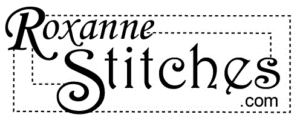I wanted to try something different! Isn’t that part of the reason why we sew?? That we want to wear something that’s unique? Well, that’s part of why I like to sew for myself. So, for this maxi skirt, I wanted a pattern with 6 gores or skirt sections. A six gore pattern is one that has 3 skirt panels in the front and 3 skirt panels in the back. I used Butterick #3134., view B. It’s not a maxi skirt, but I just cut across the pattern piece where there was a notch and added to get the maxi length I wanted. I didn’t want to add the extra length to the bottom and make the skirt any fuller than it already was. I added 15″ to the middle of the pattern. When planning the length for this pattern I added 1 1/2″ to my finished length to accommodate my “twist”. My skirt length is 40″ plus the extra 1 1/2″ for a total of 41 1/2″. I chose the 6 gored skirt version because I wanted all of my skirt sections to be equal for this project, however I only used the center front panel pattern piece and cut it six times. I needed each section to be exactly the same and the pattern was just a little bit off.

The Fall Pantone Palette is Beautiful and Vibrant!! I chose 3 shades of gray for this skirt, the darkest gray being in the “Turbulence” family.

I cut 2 panels of each color to give me a light, medium and dark panel in the front and the same for the back. Now for the magic!!

The “magic” I’m referring too, is the Cut, Twist, Sew, Repeat. The skirt was constructed in the usual manner until all 6 sections were together to make up the skirt. Each seam was carefully pressed and then I laid the skirt on my cutting table flat. I planned out my sections to be cut and made markings at 13″ above the hemline, 11″ above that section and the last section 9″ above that. I cut the sections and then reattached them after twisting and matching the first seam with the center of the next block. I did that 2 more times to get the “twisted color blocked” effect I wanted.
This skirt came together quickly and even the “twisting” was quick and kind of fun. I finished off the waistline with elastic. I sewed in the elastic with my serger and then turned it to the inside. I used a firm elastic that stays in place and looks very smooth. By using a stretch knit for this pattern, I was able to cut the pattern just a little bit smaller than my actual waistline measurement so when the elastic is attached there wouldn’t be any gathering.

I have a tip when pressing up the hem on a curved hemline when using a coverstitch. I use fusible web at each seam line so the hem doesn’t shift as I press it in place. I also run a big hand basting stitch to hold the hem as it’s stitched. Yes, it’s an extra step, but it makes the hem just that much nicer.

Here’s the finished skirt! I love the end result because it’s graphic and bold. Definitely won’t see myself coming in this skirt! I think it’s prefect for the coming fall and winter months.



A strong,serene graphic which moves my eye with pleasing grace around the body. I would never have thought of sewing the gores first, then cutting and moving but any other approach would be confusing.
Thanks for the nice comment!! I really like how bold and graphic it looks too. I can image it would be a nightmare to put together if the vertical seams weren't stitched first.
Really nice.
Thanks!!
I think this is one of the best skirts I've seen all summer. Well done!
Thanks Mary for such an Amazing Compliment!! 🙂